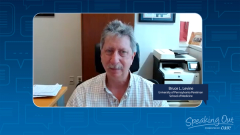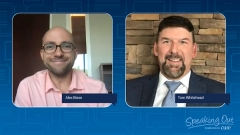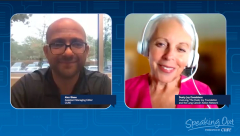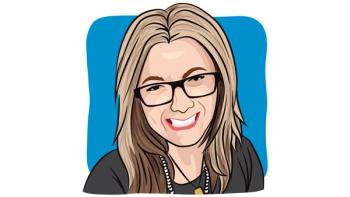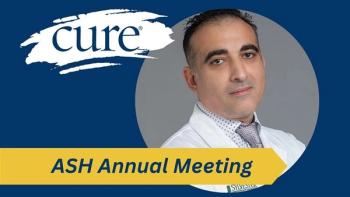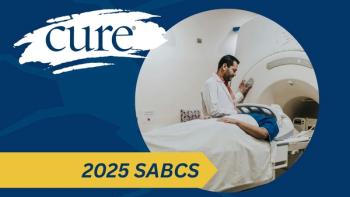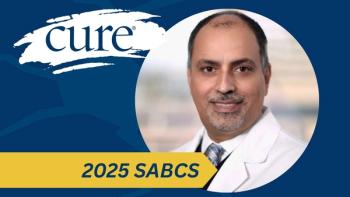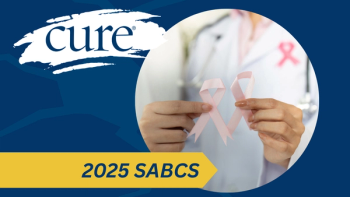
‘Never Give Up’: How Families of Young Patients With Cancer Can Seek The Best Treatment
As part of its Speaking Out video series, CURE spoke with Tom Whitehead, co-founder and president of the Emily Whitehead Foundation, about the process of seeking treatment and what resources are available for young patients with cancer and their families.
Transcription:
Alex Biese: Hi, my name is Alex Biese, and I'm the assistant managing editor of CURE magazine. In this edition of the "Speaking Out" video series, on behalf of the Emily Whitehead Foundation, we're speaking with co-founder and president Tom Whitehead about the process of seeking CAR-T cell therapy treatment. Tom, thank you so much for joining us today.
Tom Whitehead: Yeah, I really appreciate you having me on.
Biese: It is our pleasure. So, with regards to CAR-T, who are the best candidates for that sort of treatment, and why?
Whitehead: Blood cancer patients at this point are the best candidates for CAR-T cell therapy. But, eally, in the beginning, that was the only option. And now with all the research that's going into it, there are many other options. But I know the most success they're having right now is in acute lymphoblastic leukemia in the kids and the B cell lymphoma in the adults. And we're very proud that the first FDA approval came from what Emily pioneered in the very beginning.
Biese: Absolutely, and the foundation has been a big supporter of CAR-T and advancements in that field for a while now. Why is this specific field of research and treatment something the foundation really put its weight behind?
Whitehead: When Emily got started, we were told it was the garden variety kind of leukemia, that if we just followed all of their direction and did 26 months' worth of chemotherapy that she would be fine, and there was a 90% success rate. So, we were very hopeful. In the beginning, we were told, "If you have to have a kid with cancer, this is the one you want to have." Well, she suffered through a rough 16 months of treatment. And we kept hearing, 'This almost never happens." And she had infections in her legs that almost had her legs amputated in the beginning. We get to a point where they even told us, she had a one in 1,000 chance that she'd survived the night. And then, instead of going home on hospice, we found this trial opening and CAR-T cell therapy. And they treated her, and she had a very rough time of it when they first treated her, being the first child of the world had ever received the treatment, but after 22 months of failed treatment (with) standard treatment, she was cancer-free 23 days later.
So, what we saw is we received a miracle that it worked on her as the first patient in a phase 1 trial. And ever since then, when it works, it's much less toxic than standard treatment. And we're looking as with the success rate of Kymriah (tisagenlecleucel), (which) is what Emily received, it became the FDA-approved drug, that these kids when they’re standard risk in ALL that hopefully they can get it as a frontline treatment here in the future. Because when it works, it's much less toxic, (with) much less side effects. After Emily got treated, we found out May 10 of 2012 that she was cancer-free. And now we're 11 years later, and she's past 11 years since she spent a night in the hospital. And had we gotten the standard route and gotten the bone marrow transplant, which was like the only option at that time that we attempted to go to in the beginning, there was so many side effects with that, that there was probably very little chance that she'd be this far out without a hospital stay afterward.
Biese: And something you mentioned that I really want to circle back to is clinical trials and how important those were in Emily's story and how important they've been in so many people's stories. How can patients and their families go about identifying clinical trials that are happening and figuring out which ones might be appropriate for them?
Whitehead: In the beginning, we had to do our own research. I mean, I tell everybody that's involved with cancer that you’ve got to do a lot of research and you’ve got to trust your instincts. But we didn't want it to be that hard for people afterwards. So, we've helped create a trial finder for these parents that are in the cancer wards and standard treatment is running out because they usually don't find out about a trial until then.
I do encourage that you talk to your oncology nurses. They're in your room all the time, and they're up to date on the newest treatments coming. And a majority of the families that have reached out to us since Emily got better, an oncology nurse said, "Look up the Emily Whitehead Foundation because this treatment isn't working for your child."
And now we get a lot of calls from adults too that say, "I want to find a trial," and we spend a lot of time just trying to help those families. So, if you're looking for a trial and go to the Emily Whitehead Foundation, and we'll do whatever we can to put you on the right path to at least get you a phone number where you might find hope and hopefully success like we've had.
Biese: And for any viewers out there who are not super familiar with the foundation and its mission, tell me a bit about that.
Whitehead: When Emily got better and she became the first child in the world with her immune system trained to beat her cancer, we found out that when we were out there in the media and we were spreading that awareness that it led to other patients getting that chance. So that's why we started the foundation, a lot of people knew Emily's name, we wanted to make sure money raised with her story and in her name went back to funding the research for these less-toxic treatments. Because it created a fourth pillar for fighting cancer, where before you had surgery, radiation chemotherapy, as the three pillars, now you have immunotherapy, you're training the immune system to fight your cancer, where your own cells are coming back in on some of these treatments, and recognize that cancer is something bad and taking it out.
So, every day our mission at the Emily Whitehead Foundation is to help other patients and other families find hope in these new trials and make sure there (are) trials there for them, and to try to pay it forward so they can have the same outcome as we've had.
Biese: And tell me a bit more about the resources that are available for families going through their own cancer journeys through the foundation.
Whitehead: In the last couple years, we've been adding in more patient help, because sometimes patients need just funding to get to the trial center, or for whatever their needs are, they can come. We don't have unlimited resources, we're not a really big foundation yet, but we're doing our best to also collaborate with other foundations who are also trying to make sure that patients have their bills paid, that they have a place to eat, that they have a place to stay.
And we're very proud that in the beginning, you know, I had a talk with Dr. Stephan Grupp at the Children's Hospital of Philadelphia after Emily got better and I said, "You know, for parents and kids to get to your new trial or your new treatment, they're going to need help, and they're going to need a place to stay." So, a lot of these cancer centers now when you enter their trial are actually putting you in touch with a place to stay and making sure that you have a place to eat and in whatever it takes to get you there.
And again, every day for us, it's whatever we can do to help make that happen, whether it be connect them, or help pay for it. But we have an amazing board of directors now that helps guide us. And we're growing and having a bigger impact. And we knew to meet up with all the calls we get, I received calls from over 50 countries since Emily got better, we've been able to help hundreds of patients find hope in these new trials and that's all we do every day.
Even though I still work full time was a lineman for the power company and my wife works full time and research as a project manager for Penn State University, we're still very passionate and we have amazing people around us as a team, help guide us to make sure that we don't miss these calls when there's an urgent call coming from a cancer ward or an intensive care unit just looking for hope or someone to talk to that experienced this in the past.
Biese: And finally, Tom, is there anything else you would like our viewers to know about this topic and about ways that they can go about seeking the best possible treatment for someone in their life who is going through cancer?
Whitehead: I tell everybody, "These doctors and nurses and teams at the hospital, they're amazing people, but they have to fix everybody in the hospital. You just have to take care of yourself or your loved one. So do lots of research and advocate for yourself. And don't be afraid to speak up. Don't be afraid to ask for a second opinion."
What I've found is the best doctors in the world who we now are in touch with actually encourage people to get a second opinion to make sure you're comfortable with where you're going and reach out for help and don't be afraid to ask for help. And never give up. I mean, we went from we were told, "There's a one in 1,000 chance your daughter will be alive tomorrow" and now she's in college, and 11 years cancer-free. So, we're very passionate about helping other patients and families have that outcome.
Biese: That's wonderful. Tom, thank you so much for your time today. I so greatly appreciate it. I know our viewers do too. I hope you have a great day.
Whitehead: Yep. And we appreciate all the coverage we've had from CURE magazine. You guys do a great job and the awareness that you've spread of Emily's story over the years has actually led to people saving their lives.
Biese: That's wonderful to hear. We're all we're all very proud of the work we do here a CURE and are glad to know that it is recognized. So thank you.
Whitehead: You're definitely making a difference. Thank you.
Transcription edited for clarity and conciseness.
For more news on cancer updates, research and education, don’t forget to

